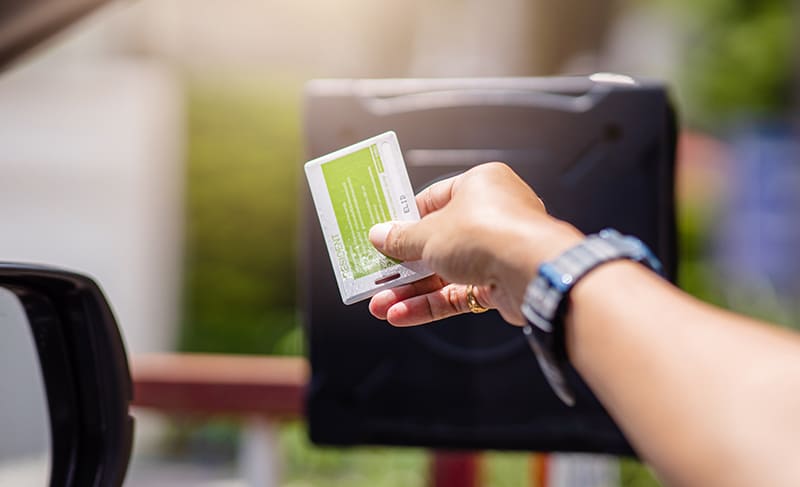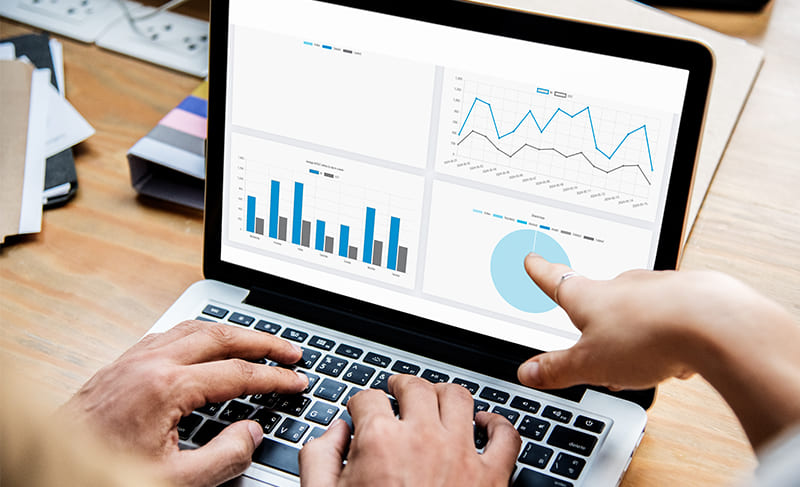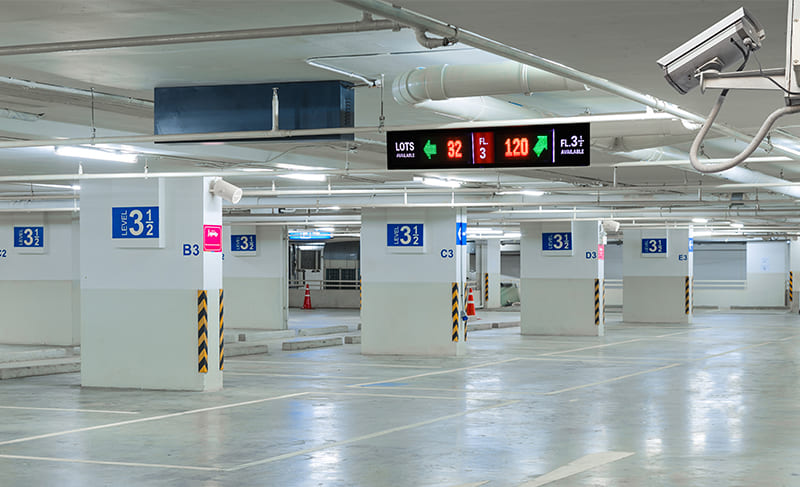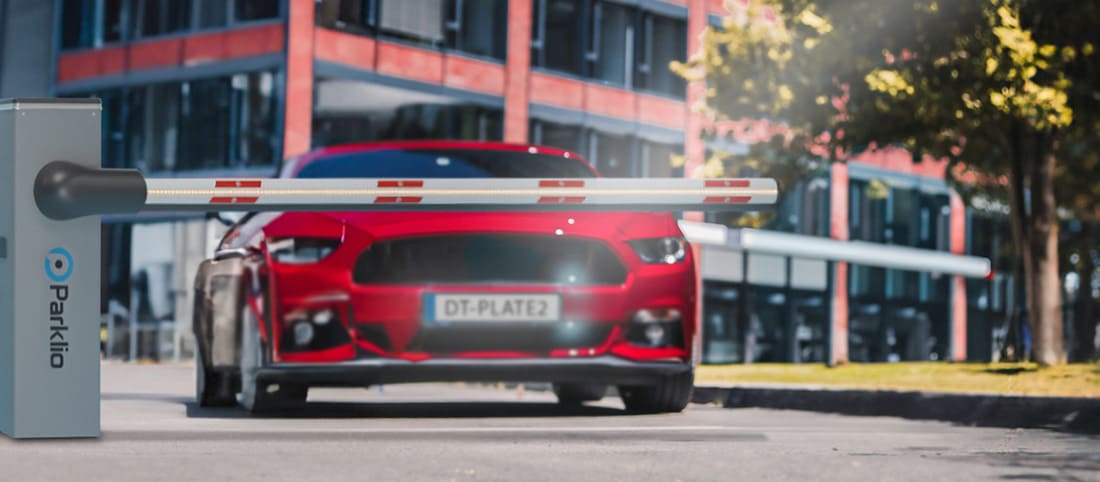A Step-by-Step Guide: How to Build a Smart Parking System

If you've ever wondered how to optimize your parking system, this blog is for you. From the initial concept to the final deployment, we'll walk you through the entire process of defining system requirements, choosing appropriate technology, managing installations, and executing comprehensive testing to ensure a scalable and efficient solution. Discover how to build a smart parking system that is efficient today and adaptable to tomorrow's demands.
Table of contents:
Understand the Basics
According to Grand View Research, the global smart parking systems market has shown remarkable growth, valued at USD 6.49 billion in 2022, with projections to expand at a CAGR of 22.1% from 2023 to 2030. For city planners and commercial parking lot managers, this isn't just good news—it's a golden opportunity.
By adopting smart parking systems, parking managers can optimize space usage and implement dynamic pricing, resulting in increased revenue and greater operational efficiency as space turnover rates improve. City planners, in particular, can leverage the data insights provided by these systems to drive smart city projects, streamline resource management, and mitigate urban traffic congestion. With their capacity to adjust to varying demands, smart parking systems are ideal for the dynamic nature of metropolitan parking needs.
So, as we continue to embrace rapid urban development, the incorporation of smart parking solutions will be critical in creating cities that are not only more efficient but also more enjoyable to live in. Ready to see how these systems can fit into your urban or commercial projects? Let’s get into the specific requirements for setting up your own smart parking system.
Define Your Requirements
Defining the requirements for your smart parking system starts with conducting a detailed survey of existing infrastructure and evaluating its readiness for integration with new technologies. Determine the number of parking spaces, the layout of the parking area, and the types of vehicles that typically use your facility. This will help you decide on the necessary features of the smart parking system, such as vehicle detection sensors, detection cameras, license plate recognition cameras, real-time availability displays, and advanced booking options.
Furthermore, it is important to analyze the typical flow of traffic and identify peak times to gain a better understanding of demand patterns. This information can then be utilized to implement dynamic pricing models.
Focus on the integration capabilities of the smart parking system with other digital infrastructure. This includes compatibility with existing payment systems, mobile apps for user interaction, and data analytics platforms. This foundation will help you tailor a smart parking solution that not only addresses your immediate needs but also scales with future growth.
Select the Right Technology
Choosing the right technology for your smart parking system involves understanding the different types of technology available and how they can enhance your parking solutions. Let's break it down by key management aspects:
Access Management
Parking barriers and gates are standard ways of controlling access. Key differences between solutions include their capacity to integrate with other technology like ANPR, RFID cards, keypads, push buttons, and intercoms. Choosing a gate system like Parklio, which supports all these options, allows you to adjust security measures to specific needs while remaining compatible with emerging technological trends without requiring extensive system changes.

Allocation Management
In smart parking systems, displays and cameras efficiently manage parking space allocation by offering real-time updates. Due to their costly and labor-intensive nature, underground sensors are becoming obsolete, making way for camera detection technologies that are more cost-effective and easier to maintain, so keep that in mind when considering the long-term sustainability and operational efficiency of your parking management system.
Payment management
To effectively manage payments within smart parking systems, operators should deploy technologies that facilitate swift and secure transactions. This includes the adoption of integrated payment systems that support various payment options, from traditional card payments to newer forms of digital payments, including NFC and QR code payments, accommodating the preferences of all users. These systems should be secure, fast, and able to handle a high volume of transactions efficiently. When making your choice, look for solutions on the market that provide scalability, user-friendly operation, and are compliant with international security standards.
Reporting and Revenue Management
With smart parking management systems, the possibilities for revenue management and optimization through reporting are almost limitless. These systems enable operators to track usage patterns and identify peak times, which can drive more informed pricing strategies. Advanced analytics can also highlight operational inefficiencies, allowing for quick adjustments that improve both profitability and customer satisfaction. Moreover, the integration of real-time data reporting helps in forecasting future trends, ensuring that your parking facility stays ahead of the curve in meeting customer needs and expectations.
Now that the operational technologies of your smart parking system have been explained, including access controls and revenue management tools, it's time to shift the focus from theoretical planning to practical implementation. In the upcoming sections, we will cover the practical steps to install and configure these technologies effectively.

Install the Hardware
When installing hardware for your smart parking system, it's crucial to use only the tools and materials recommended by the manufacturer. Ensure each component, from gates and cameras to payment terminals, is installed according to the specific technical specifications to guarantee optimal performance. Careful planning and adherence to best practices in hardware installation can prevent future operational issues, saving time and resources.
Here are some additional practical tips to guide you through the installation process:
- Ensure Power Supply Reliability: To ensure continuous operation, equip all hardware components with dependable primary power sources and additional secondary sources, such as batteries or generators, especially for critical systems.
- Secure Electrical Connections: Inspect all electrical connections for their integrity and proper insulation, especially those exposed to outdoor elements, to avoid any potential hazards or failures.
- Alignment and Positioning: Properly align sensors and/ or cameras to ensure optimal coverage and functionality. Incorrect positioning can lead to blind spots or inefficient monitoring.
- Regulatory Compliance: Ensure all installations adhere to local zoning laws and building codes to avoid legal issues, especially where special permits are required for large installations.
- Document Everything: Keep detailed records of the installation process, settings, and configurations. This documentation will be invaluable for troubleshooting and future maintenance.

Implement the Software
Once the hardware components are in place, the next vital stage is deploying the software that orchestrates your smart parking system or linking it with your current management infrastructure. This process requires ensuring complete compatibility between your software and the hardware components. Here are some additional practical tips to guide you through the software implementation process:
- Validate Data Flow: Confirm that data flows correctly between the software and hardware, ensuring accurate capture and reporting of parking metrics.
- Training and Support: Develop a comprehensive training and support program for staff to ensure effective use of the software.
- Backup Systems: Establish secure and reliable backup solutions to protect critical data from any potential threats.
The next step is putting your new smart parking system through the paces to ensure it delivers on its promise in real-world scenarios.
Test, Troubleshoot, and Rollout the System
As you near the final stage of implementing your smart parking system, it's imperative to subject it to comprehensive testing. This ensures seamless integration and functionality across all components. By subjecting the system to a series of simulated real-world scenarios, you can identify and address any potential issues that may arise, allowing you to fine-tune the system and enhance its overall performance.
Following testing, troubleshooting becomes crucial in resolving any technical or operational challenges uncovered. Through systematic problem-solving, these issues can be effectively addressed, ensuring a smooth deployment process.
Finally, after testing and troubleshooting are done successfully, you may confidently proceed with the system rollout. The hard work put into the development process will now pay off, delivering improved convenience and efficiency to users.

Capitalize on Innovative Parking Solutions
As outlined in this guide, implementing a smart parking system involves careful planning, precise technology selection, and meticulous implementation. Now that you understand the steps involved in planning and deploying these technologies, you can confidently create and implement a system that suits your objectives. If you're ready to enhance your parking solutions and receive professional guidance, Parklio is prepared to help. Our experts offer tailored advice and support to ensure your parking infrastructure meets modern demands and future challenges.

